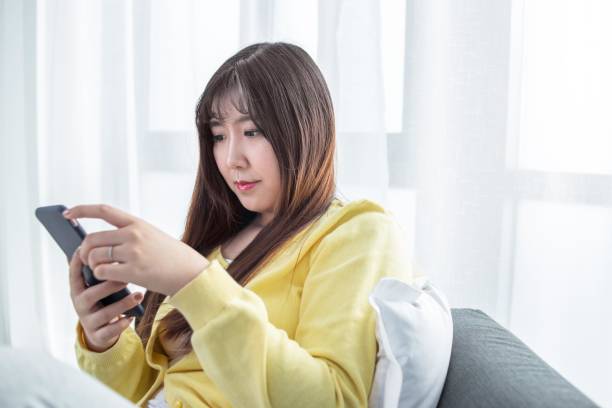In the modern age, adolescents are practically born into a digital world. From toddlers learning shapes through tablet apps to teenagers navigating the vast universe of social media, screens are not just a part of life—they’re the backdrop to growing up. But as screens become increasingly entwined with daily routines, from school assignments to virtual friendships, questions arise about the invisible cost of this digital immersion. Are teens better connected, or are they more vulnerable than ever?
A groundbreaking study published in Computers in Human Behavior has thrown this question into sharper focus. It reveals a disturbing trend: adolescents who spend more than two hours a day on screens, particularly during weekdays, are significantly more likely to experience clinically elevated anxiety and emotional or behavioral difficulties. More strikingly, it isn’t just the total time spent that matters—it’s how that time is spent. Passive scrolling, where users mindlessly consume content without engaging, appears to have the most harmful impact on teen mental health.
The Post-Pandemic Hangover: How COVID-19 Supercharged Screen Use
To understand how we arrived at this moment, we need to trace the influence of the COVID-19 pandemic. When schools closed and physical distancing became the norm, screens were the bridge to learning, friends, and even recreation. For many adolescents, online spaces provided solace, distraction, and connection during months of isolation. But that surge in screen time, driven by necessity, didn’t retreat once lockdowns lifted.
According to Emma Duerden, a Canada Research Chair in Neuroscience and Learning Disorders and an associate professor at Western University, the pandemic sparked a dramatic rise in screen usage among children and adolescents. Her team’s earlier research tracked this uptick and found that even after restrictions eased, screen habits remained high—alongside a notable rise in anxiety and depression among young people.
This latest study builds on that work, focusing specifically on teenagers—a group known to be especially sensitive to social dynamics and psychological shifts. The goal was not just to count hours but to decode what kind of screen interactions mattered most and how they intersected with mental health.
Studying the Teenage Mind: A Closer Look at Screen Behavior
The study surveyed 580 adolescents between the ages of 12 and 17, located in the United States and Canada, between December 2022 and August 2023. Participants were recruited through Prolific, an online research platform, and asked to complete a battery of questionnaires. These included assessments of anxiety, emotional and behavioral health, and detailed inquiries about screen habits, health history, and learning environments.
To evaluate mental health, the researchers used two well-established tools: the Screen for Child Anxiety Related Emotional Disorders and the Strengths and Difficulties Questionnaire. To measure screen behavior, they relied on the SCREENS-Q instrument, which captures both the quantity of screen time and the type of activities being performed, such as passive scrolling or content posting.
What emerged was a complex but clear pattern: the mental health of teenagers appeared to be significantly affected not only by how long they spent on screens, but also by what they were doing while on them.
A Troubling Surge: From Normal to Clinically Elevated Anxiety
The numbers tell a powerful story. Among adolescents with no known developmental or psychiatric vulnerabilities, 45% reported anxiety levels that fell within the clinically elevated range. Among those with existing vulnerabilities, that figure rose to 72%. These are not small shifts—they represent a dramatic increase compared to pre-pandemic norms, where 8–15% of teens typically reported such high levels of anxiety.
Emma Duerden expressed concern over these findings. “Before the pandemic, anxiety was reported in about 8–15% of teens,” she said. “In our sample, 45% of teens reported having anxiety in clinically elevated ranges. This is significant and alarming.”
Equally worrisome was the rise in emotional and behavioral difficulties. These challenges affected 42% of adolescents with pre-existing vulnerabilities and 13% of those without, showing that while vulnerable populations are at higher risk, the broader teenage population is also facing substantial challenges.
Breaking Down Screen Use: When More Isn’t Merrier
The study’s authors were particularly interested in separating quantity from quality in screen use. While guidelines from health organizations often recommend limiting recreational screen time to two hours per day, these rules are notoriously hard to implement. Moreover, they don’t account for the reality of digital life, where teens use screens not just for fun, but also to study, collaborate, and communicate.
Despite the recommendations, only 31% of adolescents in the study reported keeping screen time under two hours on weekdays. That number plunged to a mere 14% on weekends. Not surprisingly, older adolescents tended to use screens more frequently and were more likely to engage in behaviors such as passive scrolling and content posting.
But the real revelation came when researchers compared screen time with mental health. Teens who exceeded the two-hour mark on weekdays were more than twice as likely to report clinically elevated anxiety. They were also four times more likely to experience emotional or behavioral problems. While weekend screen use also showed associations with mental health, the weekday data painted a more urgent picture—perhaps because weekday overuse disrupts academic responsibilities, physical activity, and social interaction in more structured environments.
The Dangers of Passive Scrolling: When Engagement Disappears
Among all the screen-related behaviors studied, passive scrolling stood out as the strongest predictor of mental health problems. Unlike active engagement—such as messaging friends or creating content—passive scrolling involves silently flipping through feeds, watching videos, and consuming media without interaction. This type of screen use, the study found, had the most consistent link to anxiety, emotional struggles, and behavioral issues.
Importantly, these patterns held even after accounting for age, gender, and pre-existing health vulnerabilities. In other words, passive scrolling appears to harm mental health across the board, affecting vulnerable and non-vulnerable teens alike.
The psychological mechanisms behind this phenomenon are complex but understandable. Passive scrolling often involves comparison with idealized images, fear of missing out, and exposure to emotionally charged or distressing content. Without the cognitive effort required for interaction, teens may simply absorb negative stimuli without critical filtering. Over time, this can lead to heightened anxiety, low mood, and behavioral dysregulation.
Girls, Screens, and Anxiety: A Gendered Reality
The study also found that girls were more likely to report elevated anxiety levels than boys. However, there were no consistent gender differences in how screens were used. This suggests that while girls may be more susceptible to the emotional toll of digital life, they aren’t necessarily engaging in screen behaviors differently.
This finding is consistent with prior research showing that adolescent girls are often more attuned to social cues, more vulnerable to body image concerns, and more likely to internalize stress. When these tendencies meet the emotionally loaded environment of social media, the result can be a mental health minefield.
Not Just the Vulnerable: A Broad-Based Concern
One of the more surprising findings was that adolescents with pre-existing developmental or psychiatric vulnerabilities did not use screens more often or more passively than their peers. This implies that the risks of excessive or unstructured screen use extend to all adolescents, not just those already identified as high-risk.
This is critical for parents, educators, and policymakers to understand. While support systems often focus on those with diagnosed conditions, this study indicates that the broader teenage population is also at risk. In essence, screens are an equal-opportunity threat when used unmindfully or excessively.
Structural Chaos: How Screens Disrupt the Daily Flow
The study’s authors speculate that weekday screen overuse may contribute to a breakdown in structure—a key component of adolescent wellbeing. When screen time exceeds two hours during school days, it may replace sleep, physical activity, academic work, or face-to-face interaction. The result is often a fragmented routine that lacks rhythm and predictability.
For adolescents, whose brains are still wiring up crucial executive functions and emotional regulation systems, this kind of chaos can be particularly harmful. A well-structured day—with time for school, social interaction, rest, and movement—is a protective factor against anxiety. Screens, when used excessively or passively, erode that structure and open the door to distress.
Limits of the Study: What We Still Don’t Know
Like all scientific research, this study comes with limitations. It relied on self-reported data, which can be prone to bias or inaccuracies. Adolescents may over- or under-estimate their screen use, forget important details, or answer in socially desirable ways. Additionally, because the study was cross-sectional—meaning it captured data at a single point in time—it cannot establish causality. It’s unclear whether high screen use leads to anxiety or if anxious teens turn to screens as a coping mechanism.
Emma Duerden acknowledged these limitations and emphasized the need for more robust research. “This was an online study, so those without internet access were not captured in our sample,” she said. “The results were based on self-report items. Having parent or teacher reports and more time points could give a broader picture. We’re planning to conduct long-term studies and brain imaging work to better understand these relationships.”
Moving Forward: What Can Be Done?
Despite its limitations, the study provides important insights and practical implications. Reducing weekday screen time to under two hours and limiting passive scrolling could make a meaningful difference in adolescent mental health. But accomplishing this will require more than just rules—it demands cultural change, digital literacy, and accessible alternatives to screen-based entertainment.
Parents can begin by modeling mindful screen use and establishing tech-free times or zones at home. Schools can integrate media literacy into the curriculum and create opportunities for face-to-face collaboration. Policymakers can support initiatives that fund mental health services and promote physical and social activities for teens.
Most importantly, adolescents themselves must be empowered to understand how screens affect their minds and bodies. They need tools, not just warnings—strategies for managing digital life, recognizing emotional shifts, and seeking help when needed.
The Digital Dilemma: A Generation at a Crossroads
The findings from this study are both sobering and enlightening. They confirm that screens are not neutral tools—they shape the inner world of adolescents in profound ways. Used mindlessly, especially through passive scrolling, they can fuel anxiety and erode emotional resilience. But with awareness, structure, and supportive environments, the digital world doesn’t have to be a mental health minefield.
Today’s teens are navigating a landscape no previous generation has faced. Their minds are being molded in a crucible of likes, follows, and infinite scrolls. How society responds—through research, education, and compassion—will determine whether screens become a bridge to healthy development or a barrier to it.
The challenge is real, but so is the opportunity. We now know more about the digital habits that endanger mental health. The next step is action—grounded in science, fueled by empathy, and driven by the goal of helping adolescents thrive in both real and virtual worlds.






